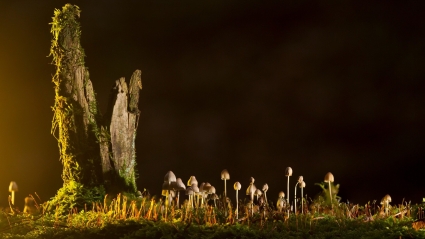Who, until the beginning of the century, cared about mushrooms? A few urban legends deigned to mention them, but most often in less than complimentary terms.
The mushroom, a recreational use
For how long have humans been using mushrooms for their medicinal properties? Around 7000 years BC, prehistory bears witness to some strange situations. The fly agaric (Amanita muscaria), a characteristic mushroom with a red cap dotted with white scales, is used for religious and recreational purposes. It is used during shamanic rituals for its hallucinogenic effects.
Later on, the use of mushrooms seems to be more frequent and more elaborate. Otzi, a prehistoric warrior who was accidentally buried and frozen, is the best example. Indeed dear naturopathic reader, rule number 1, do not go for a walk alone on the snowy mountains of the Otzal massif in Austria. He carried with him mushrooms capable of healing a war wound.
The mushroom, between beliefs and superstitions
In the mythology of Ancient Greece (900 BC - 400 BC), mushrooms symbolize magic, divinity and immortality because they appear from nowhere, from the ground or from the bark of trees. Some people even think that mushrooms are endowed with supernatural powers because they can be used to feed, heal, light fires and also poison enemies. Like the hand of the Gods, they are an inexhaustible source of food in times of famine, or conversely a toxic fruit representing divine anger.
Strange collective emotion then... What was going to happen?
The mushroom, a mystery discovered
From Antiquity (3300 BC - 476), many personalities such as Euripides, Hippocrates and Theophrastus carry out scientific studies to discover the mystery of mushrooms. Toxicity and life cycle are studied with great attention. Pliny the Elder and Dioscorides then proposed to describe all the species of mushrooms in order to better recognize them: this was the beginning of the first classification of mushrooms.
However, the scientific approach ran out of steam and went backwards from the Middle Ages (476 - 987). There is the example of "witch circles" or "fairy circles" which are the footprints left by the elves who came to dance in a circle.
The mushroom, a science of the future
Outside of the confidential circle of certain privileged people, it was not until the great intellectual effervescence of the Renaissance that a revival of interest and a massive diffusion of scientific discoveries was observed thanks to the printing press. This was only the beginning of a major advance in the knowledge of fungi with the work "Rariorum plantarum historia: Fungorum in Pannoniis observatorum brevia historia" by Charles de l'Ecluse, "Theatrum Fungorum Of Het Tooneel Der Campernoelien" by F. van Sterbeek, but above all, the essential "Synopsis Methodica Fungorum" and "Systema Mycologicum" by C.H. Persoon and E.M. Fries.
Thereafter, scientific discoveries are numerous even if they occur by chance. The most famous example is the discovery of the first antibiotic, penicillin, by the Englishman Alexander Fleming. After returning from vacation, he noticed that he had forgotten to throw away the trash can, which was full of garbage. He was surprised to discover a fungus capable of killing bacteria in the garbage can. He thought about using this exceptional virtue to fight the bacteria responsible for many human diseases. This discovery and application saved thousands of human lives from fatal infection, especially during the Second World War with the war wounded.
Updated on 10 March 2022 at 06:27







